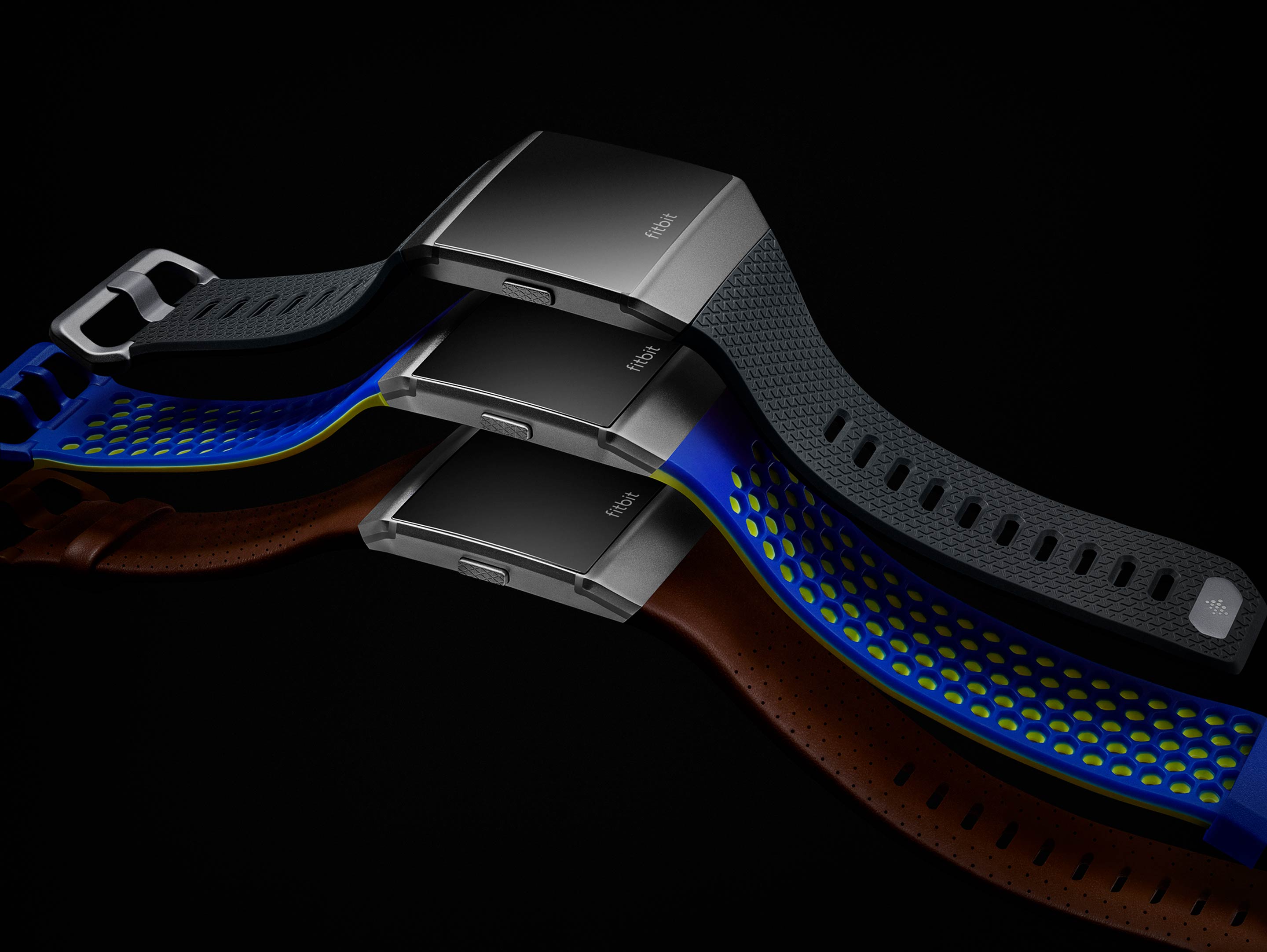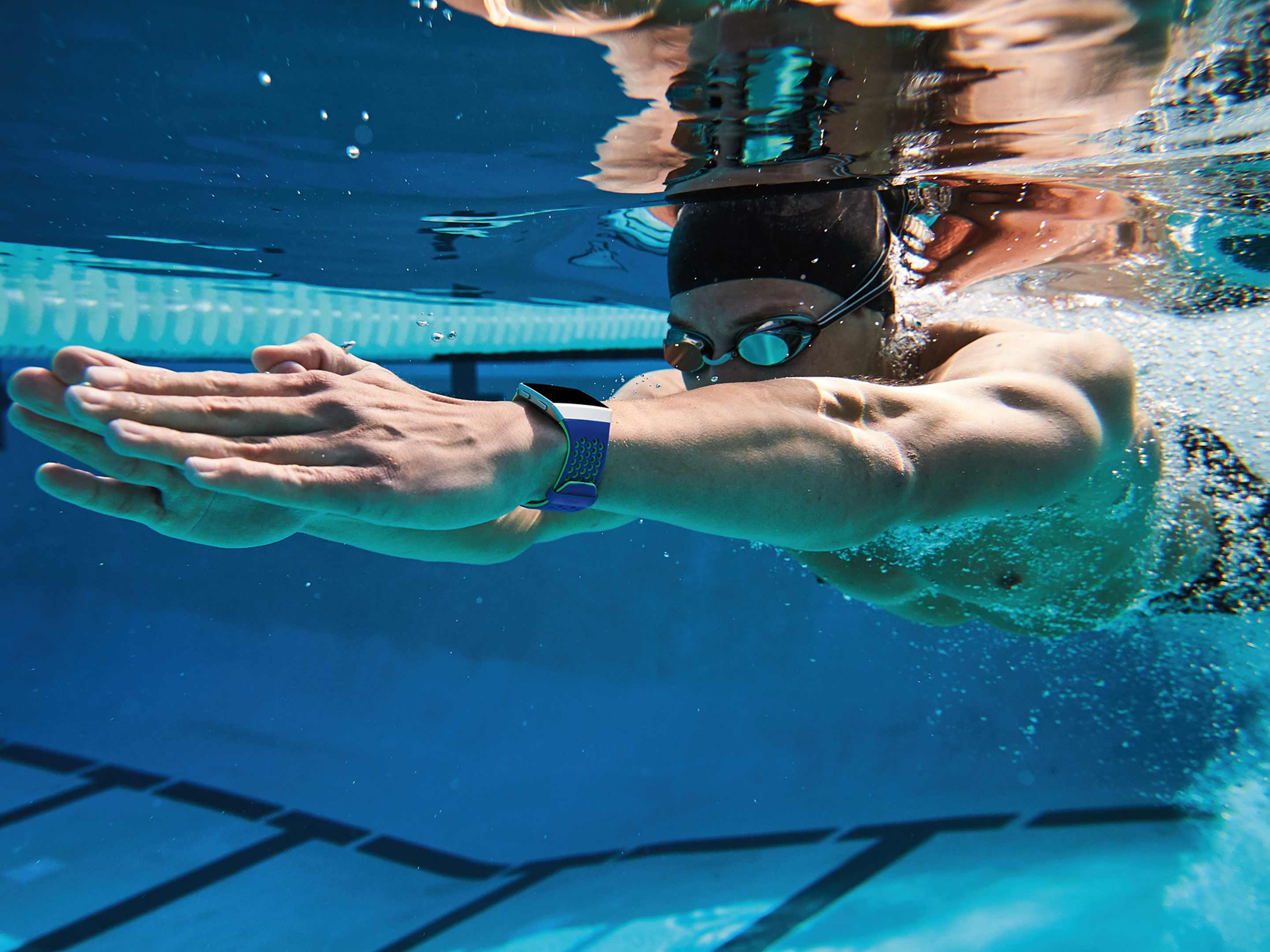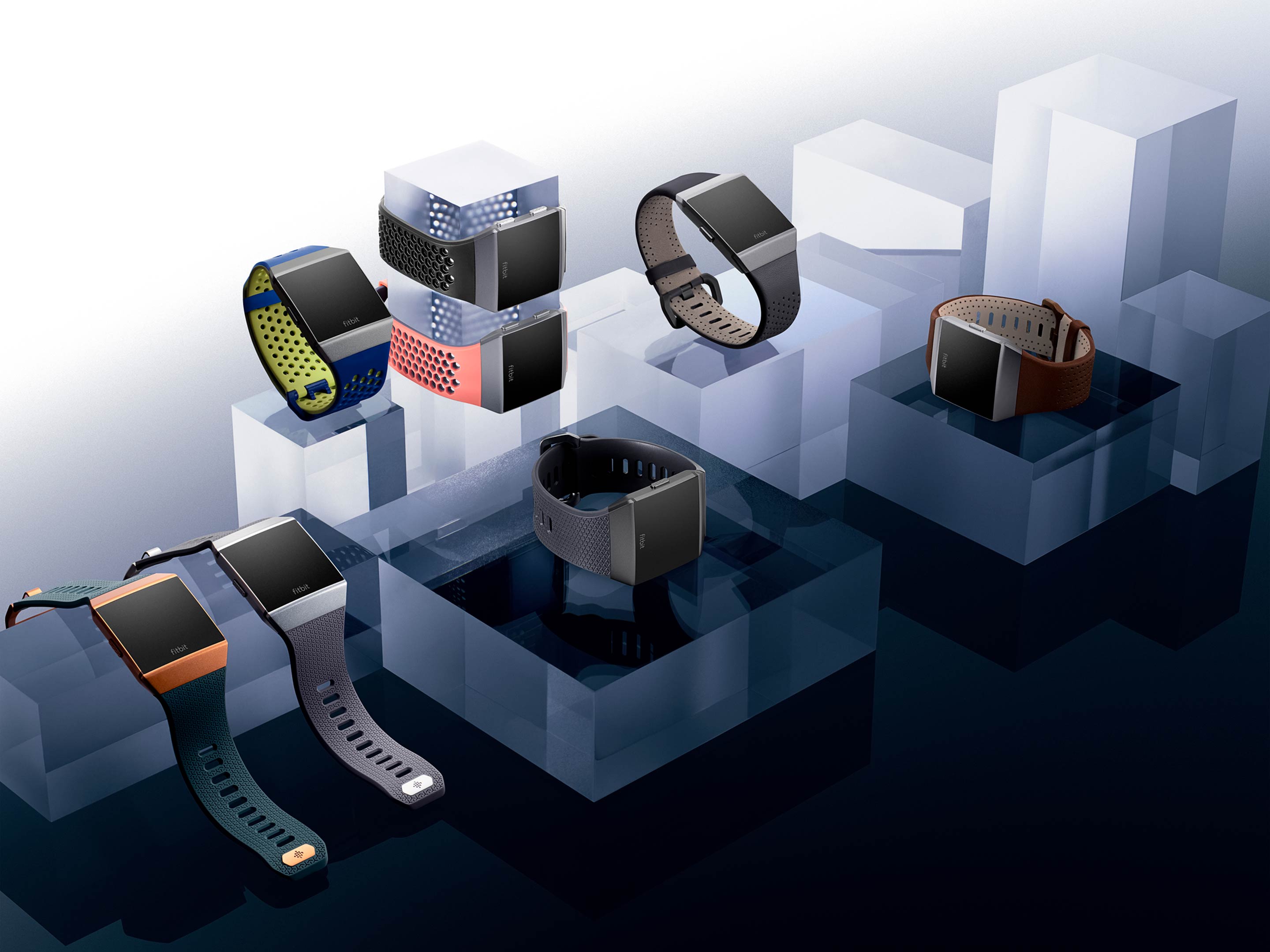
More than a year-and-a-half after the release of the critically panned Blaze, Fitbit is back with its newest smartwatch, the Fitbit Ionic.
Ionic is the first product Fitbit has designed entirely in-house — in the past, the company has called upon outside design firms to help it put together several of its other products.
Ionic’s housing is made of high-grade aluminum and is water-resistant up to 50 metres. Building upon the engineering feat the company was able to achieve with the Alta HR, Ionic’s PurePulse heart-rate module is flush with the bottom of the device, which Fitbit says leads to a better, more comfortable fit and more accurate calorie-burn and heart rate readings.
In addition, Fitbit says it has improved the software behind its PurePulse heart rate tracker; as a result, Ionic can track SpO2, a metric that estimates the oxygen saturation level of red blood cells. While the company says it won’t do a lot with this information at launch, one of its goals is to eventually allow users to track common breathing disorders like sleep apnea — a common theme with Ionic is that future software updates will allow the wearable do much more in the weeks and months to come.

Compared to most Fitbit devices, Ionic’s standout feature is its full-colour capacitive touchscreen display. Display brightness measures in at 1000nits, making it as bright as the Series 2 Apple Watch. The display also features an ambient light sensor, allowing Ionic to adjust brightness as needed to suit environmental lighting conditions — the majority of past Fitbit wearables have had only one brightness setting.
Powering Ionic is a battery Fitbit promises will last over four days under normal circumstances and up to ten hours when users take advantage of Ionic’s GPS and music functionality.
Speaking of GPS, Ionic features the best GPS tracking of any Fitbit wearable to date — according to Fitbit. The wearable can connect to both GPS and GLONASS satellites, which should improve location accuracy across the board, but particularly in dense urban environments like Toronto and Vancouver.
Using Ionic’s enhanced GPS capabilities, runners will be able to start jogging, and the smartwatch will, without any input from the user, begin tracking their workout using Fitbit’s new Run Detect feature. The wearable is also supposed to be smart enough to know when to pause automatically. In this mode, users will be able to see real-time pace, distance and heart-rate information on their wrist.

Swim-tracking is also improved. When users go swimming, Ionic will track and display laps swam, calories burned and distance travelled.
On the audio front, Ionic features 2.5GB of internal storage dedicated to storing music, allowing users to take about 300 songs with them anywhere they go. Using Bluetooth, Ionic can also connect to Flyer, the company’s new pair of wireless in-ear headphones (more on those in a separate article). Alternatively, the smartwatch can connect to any other pair of Bluetooth headphones.
On the connectivity front, Ionic includes an NFC chip and access to the company’s new Fitbit Pay platform. Fitbit Pay allows users to store their credit card information on-device and pay at any business that accepts contactless payments. At launch, Fitbit Pay will be compatible with credit cards issued by the Royal Bank of Canada and Capital One.

Together, these two features — Fitbit Pay and dedicated music support — will, according to Fitbit, will allow users to leave their smartphones at home when they go for a workout.
That said, Ionic is fully compatible with both iOS and Android smartphones and features enhanced notification support. While past Fitbit wearables have been able to display call, text and calendar notifications, Ionic will also be able to push notifications from apps like Facebook, Instagram, Slack and more.
Tying together the entire experience together is Fitbit OS, the company’s new smartwatch operating system, which the company says will launch with all smartwatch products it ships in the future.
Like most modern operating systems, Fitbit OS includes an app marketplace — dubbed the ‘App Gallery ‘ — which will include both first- and third-party developed apps. For the most part, the company says it wants to focus on apps that will allow Ionic users to customize their smartwatch — think watch faces.

However, there will also be apps that expand the functionality of Ionic. For instance, a Starbucks app will allow users to store their Starbucks Card on their smartwatch. An AccuWeather app, meanwhile, will allow users to get localized weather reports for their specific location.
In September, ahead of the release of Ionic, Fitbit will release a software development kit (SDK) for the smartwatch to allow third-party developers to create their own Ionic apps.
For developers that are catering to just their friends and family members, they’ll be able to skip Fitbit’s certification process and deliver their apps directly to other Ionic smartwatches. When developers want to deliver their apps to a broader audience, Fitbit says its certification process will be quick. The company also points out that developing apps for Ionic will be relatively quick and painless thanks to the fact that apps are coded using Java and SVP.
On a side note, the engineering staff that Fitbit brought on late last year through its acquisition of Pebble — the wearable company founded by Canadian Eric Migicovsky — helped the company develop the App Gallery and Ionic SDK.
The Fitbit Ionic will be available at major Canadian retailers, including Amazon.ca, Best Buy, Indigo, Sport Chek and Sports Expects, starting in October 2017. Canadian consumers, can also pre-order the wearable starting today for $399.95 CAD through Fitbit’s website.

At launch, Ionic will be available in three different colour combinations.
Alongside Ionic, Fitbit also announced a pair of wireless headphones, a new smartscale, dubbed the Aria 2, and a new premium training service called Fitbit Coach, which is included with Ionic.
Using Ionic’s screen, Fitbit Coach provides personalized video instruction on a variety of exercises. Starting in 2018, the app will also offer audio coaching, which will provide users with verbal instruction on how to perform a particular exercise.
In both cases, users can tell the app whether the exercise they’ve been given is too hard, too easy or just right, and the app will generate a new routine that is better tailored to the user’s fitness level.
Fitbit Coach is priced at $10.99 CAD per month or $54.99 CAD per year. The app will also be available on iOS, Android and Windows devices.
MobileSyrup may earn a commission from purchases made via our links, which helps fund the journalism we provide free on our website. These links do not influence our editorial content. Support us here.


